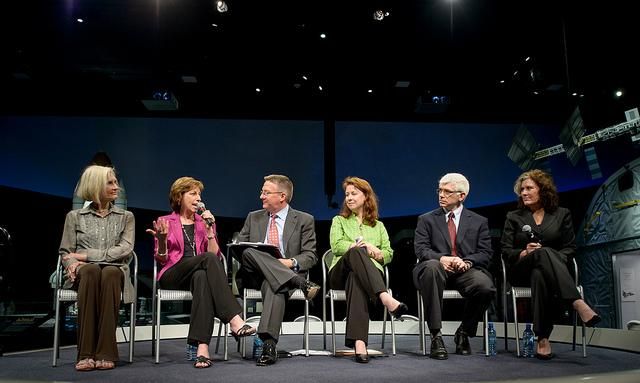How Astronaut Sally Ride Opened Science’s Doors to Women
A panel discusses the first American woman in space’s lasting legacy and the challenges still to be overcome for gender equality in the sciences
/https://tf-cmsv2-smithsonianmag-media.s3.amazonaws.com/filer/20130521090050Ride_Thumb.jpg)
The National Air and Space Museum honored the late pioneer astronaut Sally Ride recently with a panel discussion entitled “Sally Ride: How Her Historic Space Mission Opened Doors for Women in Science.”
Ride, who became the first American woman in space aboard Space Shuttle Challenger in 1983, was an outspoken advocate for women scientists and improved science education. Her highly decorated career included two trips and more than 343 hours in space, work at NASA’s headquarters, positions on the committees that investigated the Columbia and Challenger disasters and a professorship at the University of California, San Diego. In 2001, she founded Sally Ride Science, which develops science programs, books and festivals for fourth through eighth grade classrooms.
The panel was broadcasted live on NASA TV from the museum’s “Moving Beyond Earth” gallery and moderated by Tom Costello of NBC News. It featured space and science education luminaries Ellen Ochoa, director of NASA’s Johnson Space Center; Rene McCormick, director of Standards and Quality at the National Math and Science Initiative; Linda Billings, professor at George Washington University; Dan Vergano, USA Today science writer; and Margaret Weitekamp, the museum’s curator of space history.
The group reflected on Ride’s game-changing influence in a traditionally male-dominated field and her progress in promoting science, technology, engineering and math (STEM) education, as well as some of the hurdles America still must overcome to ensure gender equality in the sciences, such as lingering cultural stereotypes that prevent women from pursuing STEM careers and a lack of mentors to encourage them. A number of studies in recent years have shown that women still remain significantly underrepresented in STEM careers, particularly at higher levels, so the panel focused on the steps that must be taken to interest girls in science at a young age and to retain this interest as they prepare to enter the workforce.
“I think a lot of it is just trying to educate girls on what careers are like in those fields,” says Ochoa, an astronaut herself who followed in Ride’s footsteps as a PhD student at Stanford and believed in the possibility of being an astronaut because of her. “A lot of girls think it’s very much a solitary career. And while there are women scientists and engineers who may work alone in labs, it’s much more common that it’s more of a team effort.”

Ride had such an influence, Ochoa says, because she insisted on consulting her female colleagues when she had to make decisions about accommodating women in space travel instead of answering on her own, giving women a collective voice in the industry. Also, says Ochoa, “She did such a great job on her mission that whether or not women should be assigned to flights was no longer a question. There were still a lot of people who didn’t want to see women flying in space at the time, but they couldn’t point to any good reasons after her flight.”
In the panel’s audience was Tam O’Shaughnessy, Sally Ride Science’s chief operating officer and Ride’s life partner for more than 25 years. O’Shaughnessy launched the science education program with Ride and three other friends, and the group now is expanding their educational outreach by digitizing the books and trainings they have created to make the materials available online. Ride may be gone, O’Shaughnessy says, but “she’s still part of the company. She was our leader for 12 years, and her vision is part of our DNA now.”
Ride died at 61 last July from pancreatic cancer. Earlier this year, the Space Foundation posthumously awarded her its highest honor, the General James E. Hill Lifetime Space Achievement Award.
/https://tf-cmsv2-smithsonianmag-media.s3.amazonaws.com/accounts/headshot/paul-bisceglio-240.jpg)
/https://tf-cmsv2-smithsonianmag-media.s3.amazonaws.com/accounts/headshot/paul-bisceglio-240.jpg)